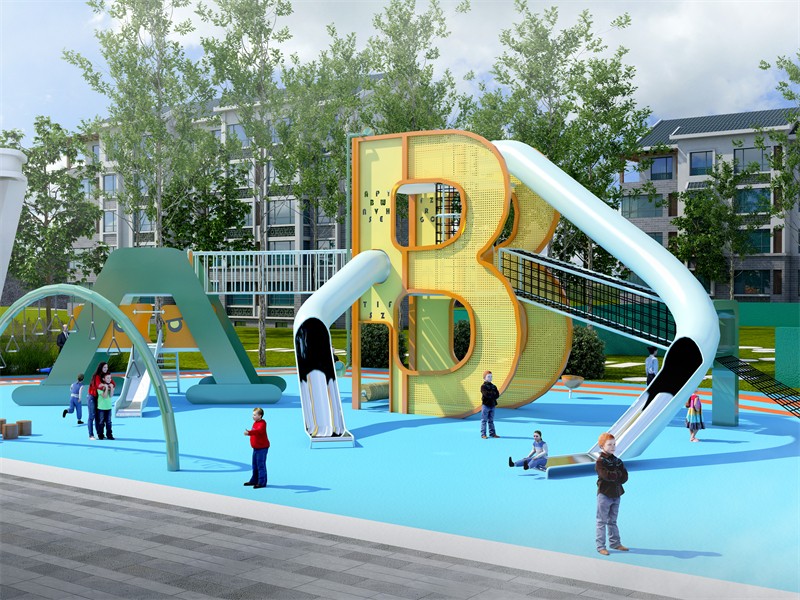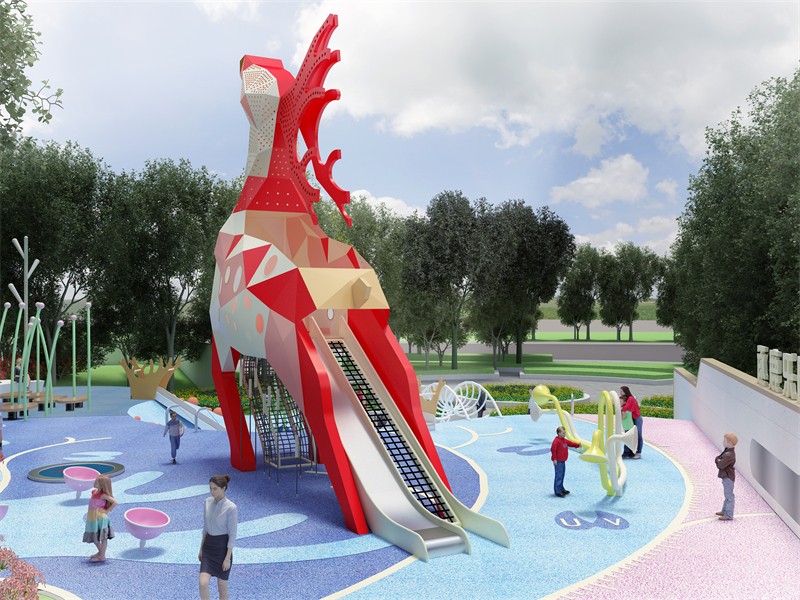With the development of tourism, theme parks play an increasingly important role in the field of entertainment and leisure. As an important part of theme parks, unpowered rides can provide visitors with a more immersive play experience. This paper will discuss the significance, demand analysis, planning and design, safety measures, economic benefit analysis and social benefit analysis of the planning of unpowered rides in theme parks.
1. Introduction
Theme park unpowered rides are amusement facilities that do not rely on any external energy source, but instead utilize their own forces such as natural energy or gravity to operate. This kind of facilities can provide visitors with joy and at the same time bring them closer to nature and enjoy the fun of sports. Good planning of non-powered amusement facilities can enhance the tourists' playing experience and increase the attractiveness of theme parks.
2.Demand Analysis
Before planning theme park powerless amusement facilities, we need to analyze the needs and expectations of tourists. Visitors generally focus on the safety, comfort and experience of the facilities. Therefore, we should focus on these aspects when planning and designing.
Safety: Ensure the safety of tourists during play and avoid accidents.
Comfort: Provide visitors with a comfortable playing environment, including appropriate facilities such as sunshade and rain shelter.
Sense of experience: Through well-designed amusement facilities, visitors can get rich visual, auditory and tactile experiences during play.

3. Planning and Design
On the basis of meeting the needs of tourists, we should carry out reasonable planning and design of powerless amusement facilities. The following are some of the main points of planning and design:
Site selection: Choose a suitable site to ensure that the construction of facilities is coordinated with the overall environment of the park.
Facility Layout: Reasonably arrange the location and interrelationship of various facilities, so that visitors can find the facilities they are interested in within the shortest time.
Play Route Planning: Design clear play routes for visitors to facilitate their experience of non-powered amusement facilities in the park.
4. Safety Measures
In order to ensure the safety of visitors, theme parks need to take the following safety measures:
Equipment Troubleshooting: Regularly inspect and maintain the amusement facilities to ensure that the equipment operates normally and potential safety hazards are eliminated in a timely manner.
Emergency treatment program: Develop an emergency treatment program for possible accidents, such as injuries to tourists, equipment failure, etc., in order to take rapid measures to reduce the losses of tourists and the park when accidents occur.

5. Economic Benefit Analysis
The construction of powerless rides requires a certain investment and operating budget. In order to ensure the maximization of economic benefits, we need to analyze the following aspects:
Investment budget: make a reasonable investment plan according to the construction scale and complexity of the facility.
Operating Costs: Calculate the costs of energy, labor, and maintenance required for the operation of the facility, and develop corresponding cost control measures.
Revenue Expectation: Estimate the expected revenue of the powerless amusement facilities by predicting the number of tourists, ticket price and other factors.
6. Social Benefit Analysis
The construction of powerless rides is not only beneficial to the theme park itself, but also has a positive impact on the surrounding society and environment. The following are some of the possible social benefits:
Local economic benefits: The construction of the theme park and its unpowered rides will lead to the development of local tourism and increase local financial income and employment opportunities.
Cultural promotion: Through well-designed amusement facilities, the park will display local history, culture, folk customs and other characteristic elements, and enhance the popularity and influence of local culture.
Environmental protection measures: Focus on the use of environmental protection concepts in the design of facilities and choice of materials to reduce the consumption and pollution of natural resources. For example, the use of renewable energy to drive amusement facilities reduces carbon emissions; the selection of materials with low volatile organic compounds (VOC) reduces air pollution.
The planning of non-powered rides in theme parks is a key link in improving the overall quality of theme parks and visitor experience. Through in-depth analysis of visitors' needs, rational planning and design, adoption of safety measures, economic benefit analysis and attention to social benefits, we will create a fun-filled, safe and environmentally friendly theme park environment for visitors. At the same time, these measures will also help enhance the competitiveness of theme parks.
+86-13566236059
#16 Chuangqiang Road, Light industrial area, Lucheng district, Wenzhou city, Zhejiang Province, China.
+86-577-85951908
+86-577-86457291
